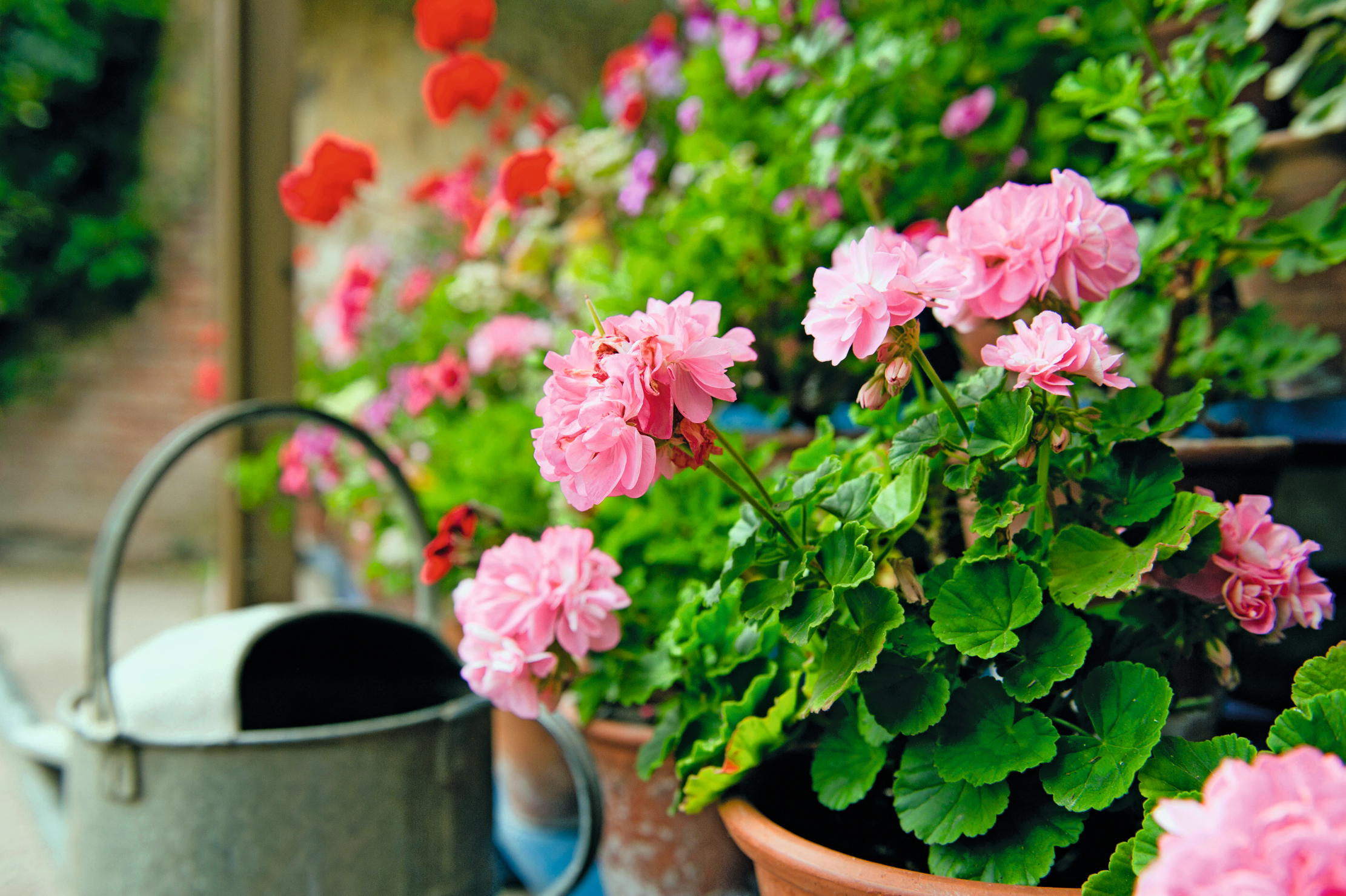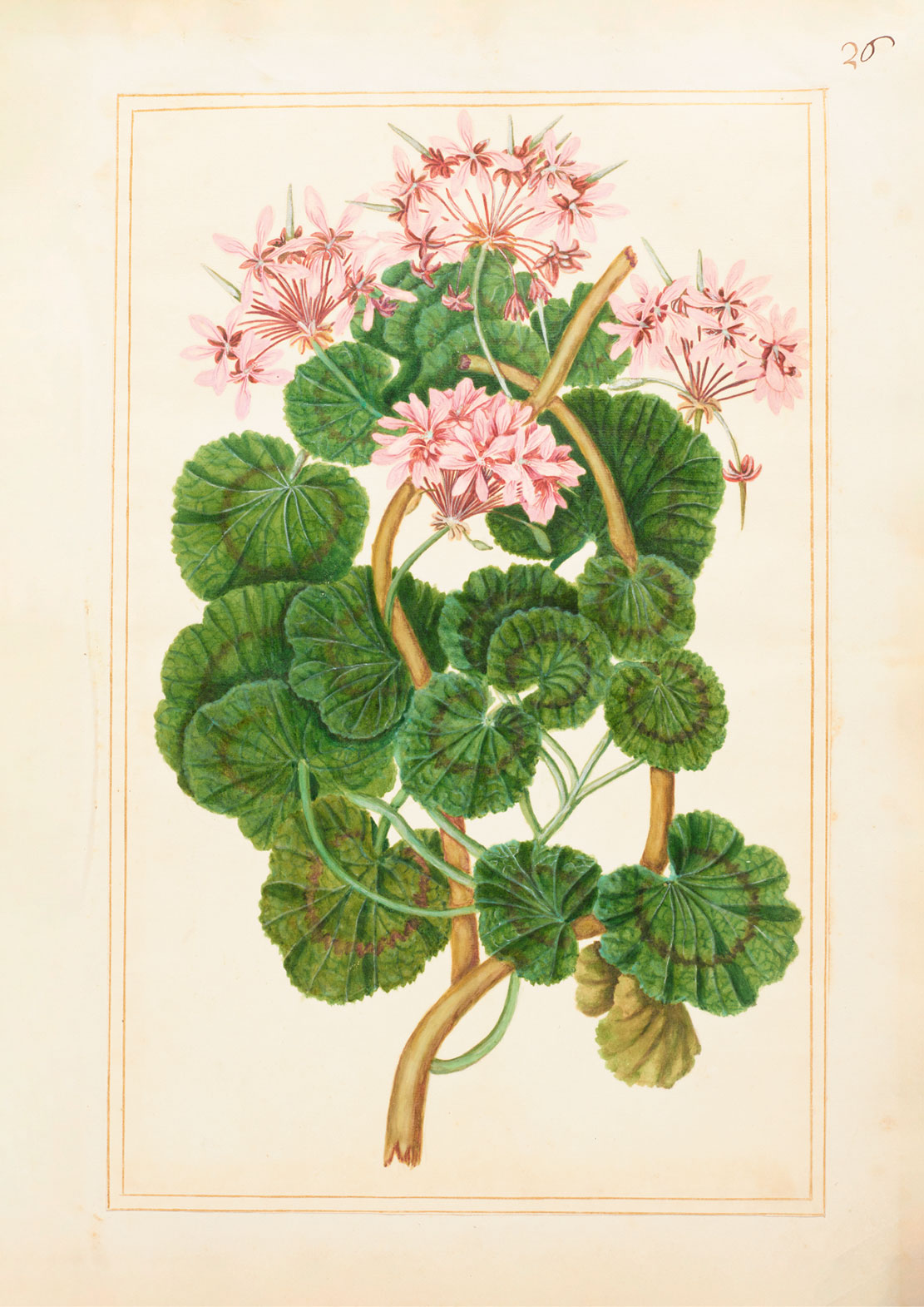Pelargoniums: The flowers that'll make your garden smile
John Hoyland celebrates the renewed popularity of the irrepressibly cheerful pelargonium.

‘Never trust a man or a woman who is not passionately devoted to geraniums.’ Garden writer Beverley Nichols’s typically tongue-in-cheek, overblown remark hides a truth: how can anyone not be captivated by the exuberance of blowsy red geraniums tumbling down the facades of public houses, adorning terraces in terracotta pots or lined out in spectacular bedding schemes? These are plants that make us happy, bringing a smile to even the most curmudgeonly.
Nichols was writing in 1951, when a generation emerging from a world war welcomed the pizzazz of bright red geraniums. These are flowers that have never really gone out of fashion, but, as with all plants, the extent of their popularity has ebbed and flowed. In recent years, the focus of many gardeners and garden designers has been on more subdued flowers, species plants that have a look of the wild about them, as extravagant, colourful flowers have been overlooked, even dismissed as vulgar; but a plant as easy to grow, long flowering and cheerful as a hybrid geranium will always be a mainstay of summer gardens. And thanks to a group of geranium enthusiasts, the colourful hybrids seem to be enjoying a renaissance.
What Nichols knew as geraniums are, as any botanist or horticulturalist will waste no time in pointing out, not geraniums at all, but pelargoniums. True geraniums are hardy perennials, stars of herbaceous border and meadow, but with none of the vibrancy of pelargoniums. As long ago as 1901, The Gardener’s Chronicle was bemoaning the fact that ‘the average gardener speaks of Geraniums when he means Pelargoniums’. This is still true for most of us today, with the names being almost interchangeable: when most of us talk of geraniums we usually mean pelargoniums.
"For the Victorians, the flowers of regal pelargoniums were highly prized"
The first pelargonium arrived in Britain in 1631, acquired by John Tradescant the Elder from South Africa via the botanic garden in Leiden. The plant caused a sensation and was the start of a fascination with the genus that has led to the breeding of more than 17,000 hybrids and cultivars that often bear little semblance to their wild ancestors. So many hybrids have been bred that they are categorised into groups according to their principal characteristic.
For the Victorians, the flowers of regal pelargoniums were highly prized for their early flowering and 2in-wide flowers that often have frilly petals. Later, the Angel group, with plants smothered in small pansy-like flowers, became popular. Every generation has appreciated pelargoniums with scented foliage. The fragrance runs from spicy to sweet: rose, lemon, apple, peppermint, nutmeg, cinnamon, almond, eucalyptus, grapefruit, celery, camphor, coriander, pine and even pineapple. The trailing ivy-leaved types, often the source of the familiar red geranium, became increasingly popular at the onset of mass tourism when holidaymakers became enchanted by the sight of flashy pelargoniums glowing against whitewashed walls of Greek tavernas or illuminating Andalusian patios. Even back home, in the weaker light of Britain, the flowers looked spectacular.
Our love affair with pelargoniums has endured for nearly four centuries and the plant has permeated our lives almost as much as have roses. In the bathroom, there are geranium perfumes, soaps and hand creams; in the kitchen, cakes and jams flavoured with geranium and in the medicine cabinet, a species, Pelargonium sidoides, is an ingredient to some cough syrups. The plant has even made its way into the drinks cupboard. Geranium gin, anyone?

The flamboyant flowers of pelargoniums, such as ‘Appleblossom Rosebud’, will light up the garden throughout the summer.
Pelargoniums have provided inspiration for artists, too, from early 17th-century botanical studies by Johann Jakob Dillenius and others to paintings by Renoir, van Gogh and Matisse, who made many still lifes of pots of geraniums. In 1703, the 1st Duchess of Beaufort commissioned a florilegium that included paintings of pelargoniums in her famous plant collection. This year, for the first time, the bound volumes and reproductions of the paintings are on display at Badminton House, where the greenhouses are home to a collection of pelargoniums.
Exquisite houses, the beauty of Nature, and how to get the most from your life, straight to your inbox.
Nichols would be reassured that, today, there are many people and plant nurseries ‘passionately devoted’ to pelargoniums, or ‘pellys’, as enthusiasts refer to them. One such, the designer Cath Kidson, has vivid memories of the strong scent from geranium leaves and the vibrant hues of the flowers in her mother’s garden, remembering even the taste of a leaf added to refreshing lemon drinks.
When she moved into her first small London flat, it was a geranium that helped maintain her link with the natural world. As do many flat dwellers without a garden, she learned that geraniums are easy and accommodating plants. Even a single plant on a windowsill can lift the spirits. She now has a greenhouse packed with geraniums, often bringing them indoors to decorate the house and has created a range of body-care products at her new shops, C. Atherley, that perfectly match the scent of a particular species, Pelargonium radens, with the perfumes of more to follow.

‘African Geranium’, actually a pelargonium. Native to South Africa, this is one of the many African plants that the 1st Duchess of Beaufort would have acquired for her florilegium from the Cape of Good Hope via her links to botanists in the Netherlands.
As a fully-fledged ‘pelly’ fanatic, she would, like other collectors, have been distressed to hear of the possible demise of Britain’s largest pelargonium producer, Fibrex Nurseries in Worcestershire. Established in 1960 by Hazel and Dick Key and subsequently run by their family, it produced more than 2,500 types of pelargoniums. In 2022, the announcement by the Key siblings that they were to retire and close the nursery put the world of ‘pelly’ lovers into turmoil. Luckily, the RHS stepped in to propagate and distribute the plants among its gardens, and then, to the relief of many, a young horticulturalist, Ed Boers, and his partner, Laura Whiley, bought the nursery, bringing energy and enthusiasm to ensure that the collection continues. They plan on adding even more cultivars to the range.
Together with other specialist pelargonium nurseries, such as Allwoods in East Sussex and Woottens of Wenhaston in Suffolk, Fibrex will continue to cater to the tastes of every pelargonium lover and ensure supplies across the astonishing spectrum of the family: the small and demure species, those with scented foliage, the regals, the angels, the ivy-leaved, the rosebuds and, most importantly, the bright and blowsy. However much tastes and fashions change, one irrepressible constant will be the glorious vitality of a red geranium.
Find out more about pelargoniums
Fibrex, Worcestershire www.fibrex.co.uk
Woottens Plants, Suffolk www.woottensplants.com
Allwoods, East Sussex www.allwoods.net
C. Atherley, London W2 www.c-atherley.com
The exhibition ‘A Garden of Botanical Art’ runs at Badminton House, Gloucestershire, until September 15 www.badmintonestate.com